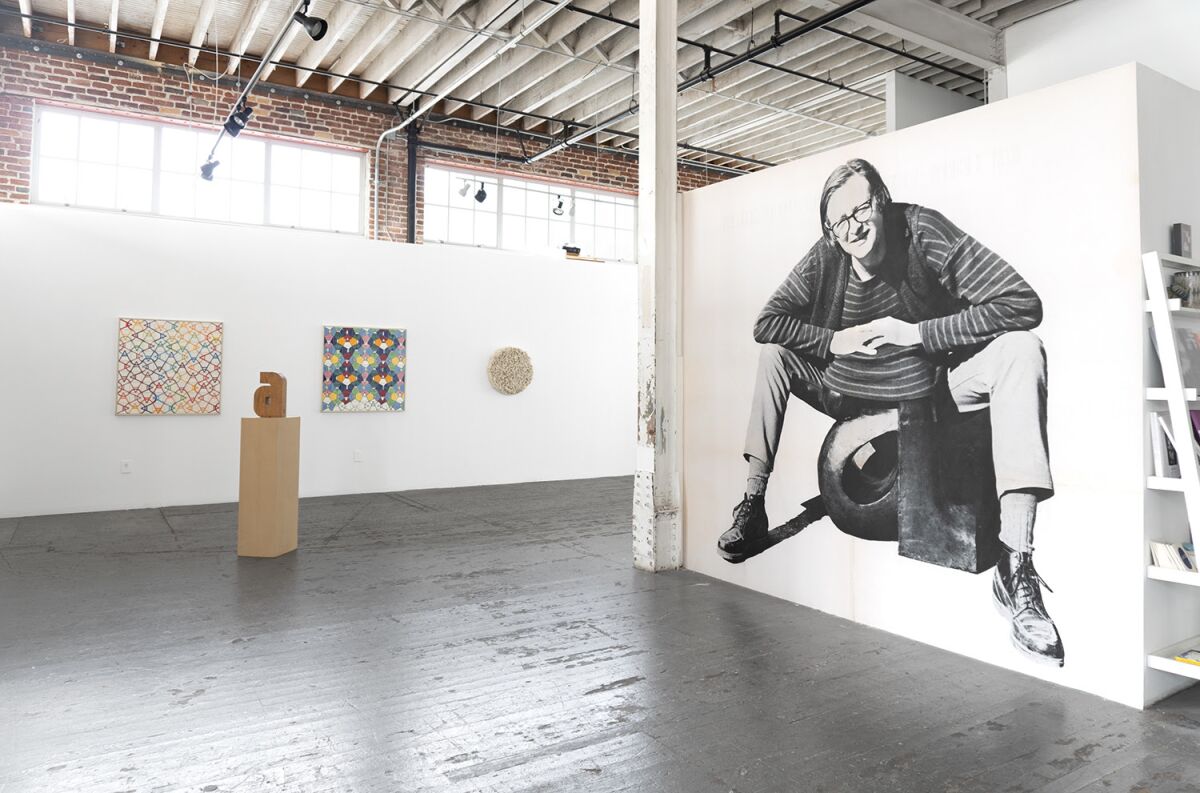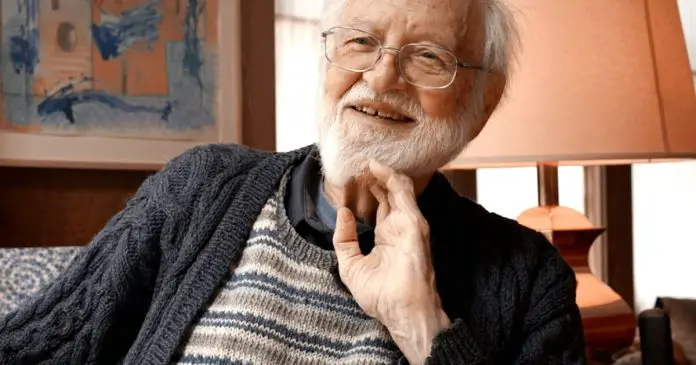In 1992, I took an artwork class in narrative kinds at UC Berkeley. The teacher was Jim Melchert, then in his 60s and a central determine within the Bay Space artwork neighborhood. Our major medium within the class was the photocopy. Each week, we every made an artist’s e-book with sufficient copies for every pupil to have one.
Close to the top of the semester, Jim (we by no means referred to as him “Professor Melchert”) invited our small class over to his home for dinner. Video artist Invoice Viola was on the town and screened considered one of his works. Afterward, buoyed by conviviality, a number of of my classmates and I drove round all night time, speaking and smoking. On the day of our final class, the motive force from that night time introduced the ashtray from his automotive, overflowing with cigarette butts: gross, sure, however a story type we made collectively, catalyzed by Jim.
All through his profession, Jim remained open to serendipity. He created elegant, conceptually pushed work in clay, movie, pictures and efficiency, the place he embraced experimentation, play and improvisation. Unfailingly pleasant, he was beloved and revered as a trainer and mentor, however his abilities prolonged past the studio and the classroom. He was the primary artist to function visible arts program director for the Nationwide Endowment for the Arts, and later served because the director of the American Academy in Rome. Jim handed away on the age of 92 on June 1 at his residence in Oakland of problems from a stroke. He’s survived by his three kids, 5 grandchildren and three great-grandchildren.
James Frederick Melchert was born on Dec. 2, 1930, in New Bremen, Ohio. The third and youngest son of Rev. John Carl Melchert and Hulda Egli, he graduated with a level in artwork historical past from Princeton College in 1952. Declaring himself a conscientious objector throughout the Korean Struggle, he was given various service instructing English in Sendai, Japan, the place he lived for 4 years. There he met and married Mary Ann Hostetler, the daughter of Mennonite missionaries. They’d two sons earlier than shifting again to the USA in 1956 so he may pursue a grasp of positive arts in portray on the College of Chicago. Mary Ann handed away in 2005.
In Chicago, Melchert was launched to Summary Expressionism, the dominant American type of portray on the time, though he labored in a representational type, principally nonetheless lifes. After graduating, he grew to become the one artwork teacher at Carthage School, the place he was additionally required to show ceramics. To maintain forward of his college students, Melchert enrolled in a summer time class in Missoula, Montana, taught by Peter Voulkos, who was then radically reshaping ceramic artwork in an Summary Expressionist mode. Voulkos made such an impression that in 1959 Melchert grew to become his studio assistant, shifting his younger household to California, the place Voulkos taught at UC Berkeley. Melchert earned a second grasp’s diploma in ceramics there.
Within the early Sixties, Melchert taught ceramics and sculpture on the San Francisco Artwork Institute and immersed himself within the Bay Space artwork scene, befriending artists equivalent to Carlos Villa, with whom he as soon as shared a studio, Manuel Neri, Nathan Oliveira and Joan Brown. By means of Voulkos, he additionally made connections within the L.A. ceramics world, together with John Mason, Henry Takemoto and Michael Frimkess. Melchert’s early ceramic work mixed qualities of Summary Expressionism with the eclectic, figurative impulses of the rising California Funk motion. His sculptures from this time appear to be whimsical industrial castoffs or colourful but mangled theatrical masks, toeing the road between objects and our bodies, abstraction and figuration. In 1964, he joined the artwork school at UC Berkeley, the place he taught till his retirement in 1994.

Melchert embraced many types of artwork in his lengthy profession, notably ceramics.
(Griff Williams / Gallery 16, San Francisco)
Within the Seventies, Melchert’s work started to maneuver in a extra conceptual path, influenced by concrete poetry and the work of composer John Cage. In 1972, he organized a efficiency referred to as “Adjustments” at Hetty Heisman Studio in Amsterdam, during which he and a gaggle of Dutch artists every dunked their heads in a bucket of moist clay slip and sat on a bench because the slip dried and cracked, changing into a type of residing sculpture.
In 1976, Melchert left the Bay Space for the Nationwide Endowment for the Arts in Washington, D.C., the place he strengthened and diversified grant packages supporting artists and nonprofit artwork areas. He returned in 1981, however three years later was tapped as director of the American Academy in Rome, the place he served till 1988.
His travels across the Mediterranean led to his curiosity in ceramic tiles, a preoccupation that lasted for the remainder of his life. He was fascinated by the myriad methods a tile cracked when damaged, studying from a physicist that the ensuing strains and fissures occur the place molecular bonds had been the weakest. He created quite a few works in tandem with these cracks, creating summary designs on damaged tiles that might resemble constellations, sound waves or flowers. He continued making these works and exhibiting till very lately; the final art work posted on his web site is “Shards 2” dated 2021-22.
It was in Jim’s class that I first felt the inkling that there was extra to being an artist than merely expressing your self. It was additionally about paying consideration — trying carefully and curiously — and being open to the place it’d take you. In a 2020 interview with Constance Lewallen for the Brooklyn Rail, Melchert stated of his damaged tile works, “Like rivers will take the trail of least resistance, so will the power capturing by a tile. … It’s an exquisite factor, which you can simply liberate one thing from a cloth. I cherished that.”














